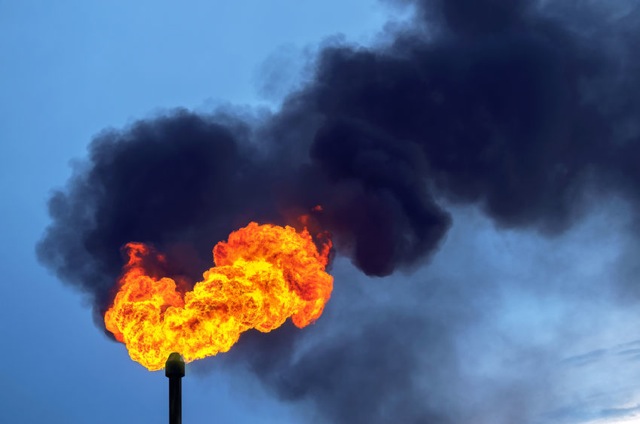| University of Colorado at Boulder | |||||||
 |
|||||||
|
Role of Oil and Gas Development in Air PollutionEmissions from the development of oil and gas have the potenial to contribute to local, regional and global air pollution. The two main sources of air pollution contributed by oil and gas development are flaring/venting and fugitive emissions. Continuious flaring and venting of natural gas is widely recognized by the industry as a waste of valuable resources and large contributor to GHG emissions. Fugitve emissions are released into the air as result of leaking pipes or tubings, defects in vents, pumps/compressors seals and or tanks/storage pits. Currently, air quality issues associated with oil and gas have seen an increase in the intermountain west.To find more information on the current issues surrounding air quality and oil and gas development visit our Air Quality Issues Resource page. The EPA also provides a brief summary of basic information regarging air quality and oil and gas development Main Pollutants from Oil and Gas DevelopmentMethane
Methane is the primary pollutant released from natural gas operations through both procedural venting and unintentional leaking. Procedures such as the continuous bleed of gas from pneumatic devices or venting from well completions during production lead to excessive methane waste. The production phase alone accounts for 72% of total methane emissions from oil and gas development (EPA, 2016). The EPA provides more in-depth information on methane emissions here. Volatile Organic CompoundsA grouping of organic chemicals known to be highly reactive in the atmosphere and a large contibutor to ground-level smog. The oil and gas industry alone makes up the largest source of VOCs according to the EPA. VOCs are considered primary pollutants when associated with the direct fugitve emissions at a well site. However, VOC's are the active chemicals that can combust in the upper atmospere to form secondary pollutants through exposure to sunlight. Along with ground level smog formation, VOCs can also belong to a group of toxic organic chemicals associated with the oil and gas operations. VOCs that are catergorized as air toxins put operators at higher risk for cancer and other serious illneses. Benzene, ethylbenzene, and n-hexane are some of the more well-known air toxic VOCs associated with oil and gas development. Federal and State Laws that Govern Oil and Gas DevelopmentFederal Clean Air ActInformation regarding federal laws that govern oil and gas development can be found on the Intermountain Oil and Gas Project's page on the Federal Clean Air Act. The EPA also provides a supplemental overview of The Clean Air Act here. Colorado Air Quality Statutes, Regulations, and GuidanceInformation regarding Colorado state laws that govern oil and gas development can be found here. The Air Quality Control Commission’s website contains detailed information about proposed regulations and the rulemaking process, compliance with and enforcement of air quality statutes and regulations, and the permitting process required for industries that emit air pollutants.
|
|||||||






